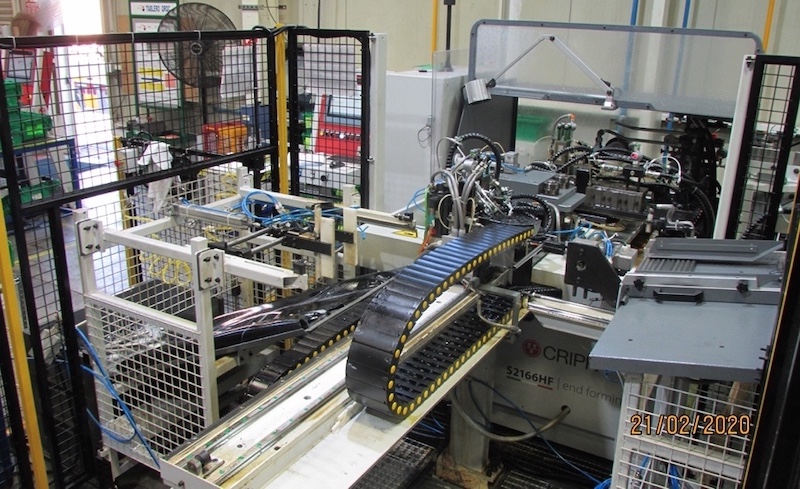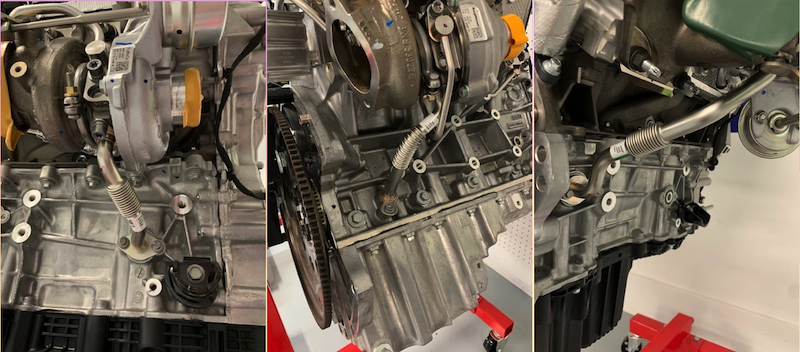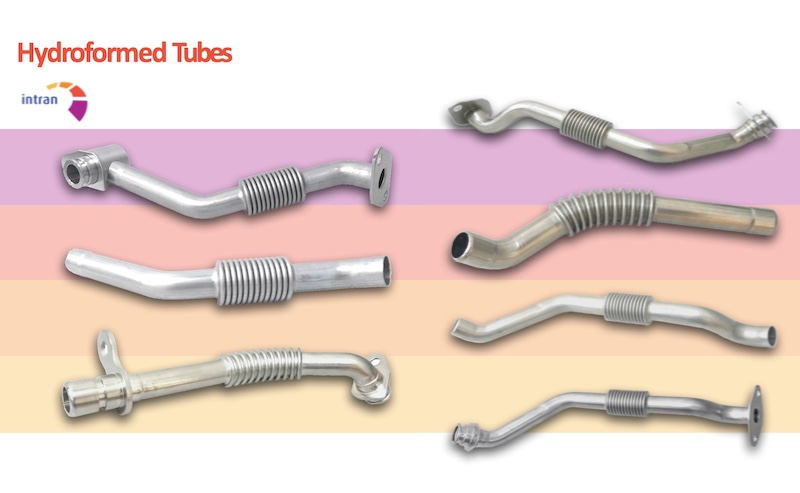A Description Of The Tube Hydroforming Process
At Intran, we offer bellowed tube hydroforming along with many other manufacturing services. Bellowed tube hydroforming is the ideal way to make hollow tubes. The hydroforming process ensures consistent wall thickness and dimensional tolerances. This is quite important in mechanical applications.
In a nutshell, the hydroforming process involves using high-pressure fluid to shape the tube from inside out. To help you understand more about our process, we put together an in-depth description of how it works.
Our Hydroforming Machines

First, we want to talk about the machines we use in the tube hydroforming process. We use large die machines with the following components:
- Negative molds: one at the top, and one at the bottom
- Each part needs its own set of negative molds with the correct dimensions
- Clamping cylinder
- Axis press cylinders (one on each side of the tube)
- High-pressure hydraulic generator
Tube hydroforming is a straightforward process. Yet, it requires highly engineered, very strong machinery. This ensures there’s enough strength to hold the negative molds in place when high fluid pressure alters the shape of the tube.
How The Process Works

Inside the machine, the negative molds meet like a sandwich. There’s enough room to insert the tube. The tube fits between the negative molds snugly, except in certain areas. Those areas are where the bellows/corrugates will be formed. A bellows (or corrugate) is a section of a tube that ends up looking like an accordion. This section of the tube allows it to flex and absorb vibration.
When the correct negative molds are placed into the machine and the tube is positioned between the molds, here’s what happens:
- The machine seals up to enable the high pressure hydraulic fluid to form the metal into the desired shape.
- The high-pressure hydraulic generator pumps at least 400 KPA of fluid pressure into the tube.
- The clamping cylinder fights the pressure by keeping the negative molds firmly in place.
- The hydraulic fluid pressure forces the tube to expand to the shape of the negative molds.
- The machine discharges the hydraulic fluid.
- The technician opens the machine to retrieve the newly formed tube.
We can use either seamless or welded tubes. The most common metals used in bellows tube hydroforming include:
- Stainless steel
- Aluminum
- Inconel
- Copper base alloys
The Inspection Process

At Intran, we take quality control very seriously. After every production run, the parts undergo a thorough inspection process. We use two types of machine vision systems:
- Automatic Inspect Vision System
- 3D Inspection Vision System
A machine vision system detects defects and other irregularities in the products after production.
Our robust quality control process also involves using a ZEISS Coordinate Measuring Machine. It measures each unit to ensure that it has all the right dimensions.
We Also Offer Other Services
At Intran, our goal is to offer a turn-key operation for all your needs. Right now, we can offer other steel processing services alongside tube hydroforming with bellows/corrugates. Such services include:
- Sheet metal stamping
- Controlled atmosphere brazing
- Tube bending
- Tube straightening
If you have any questions about our tube hydroforming services, please contact us.
